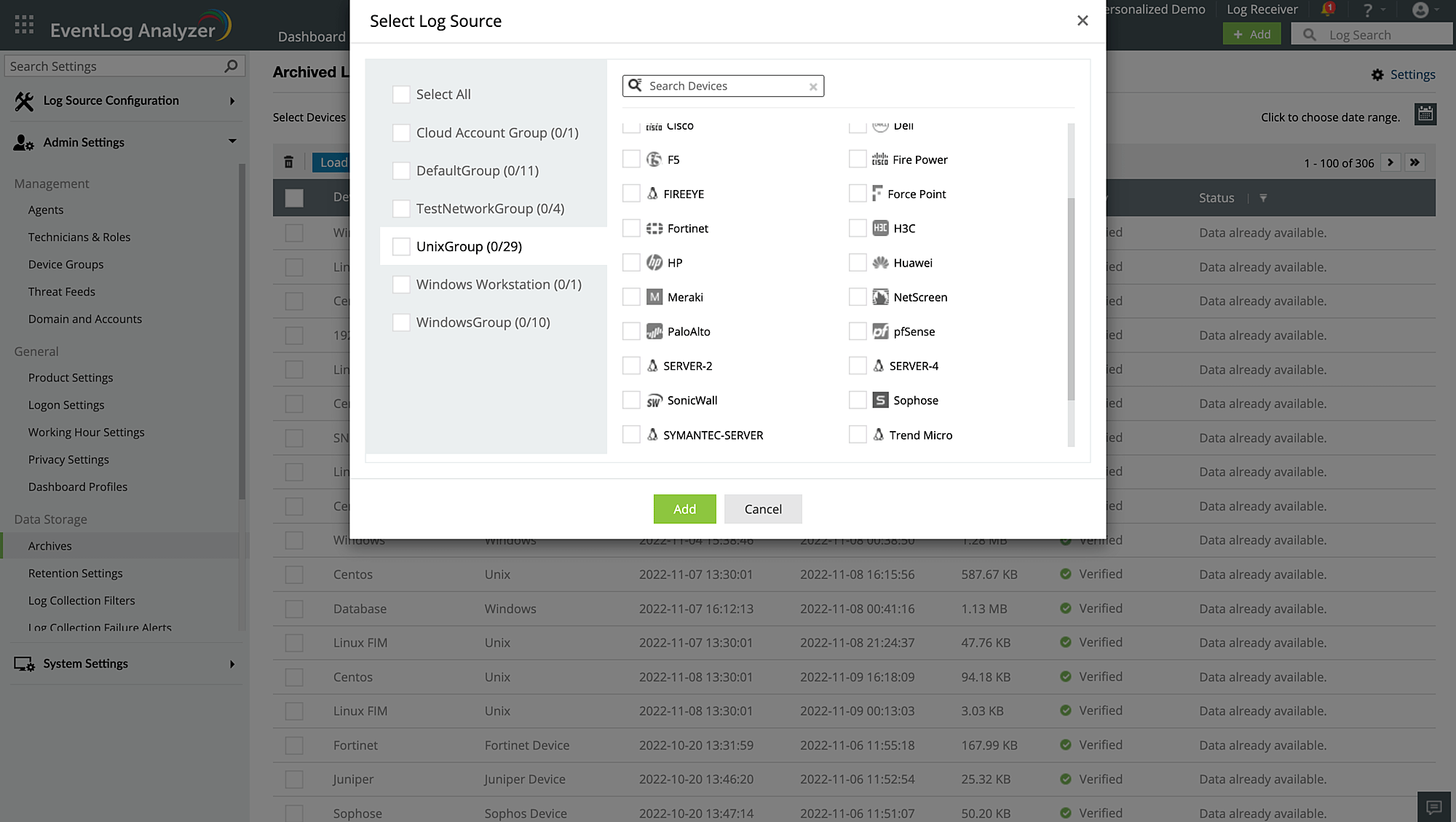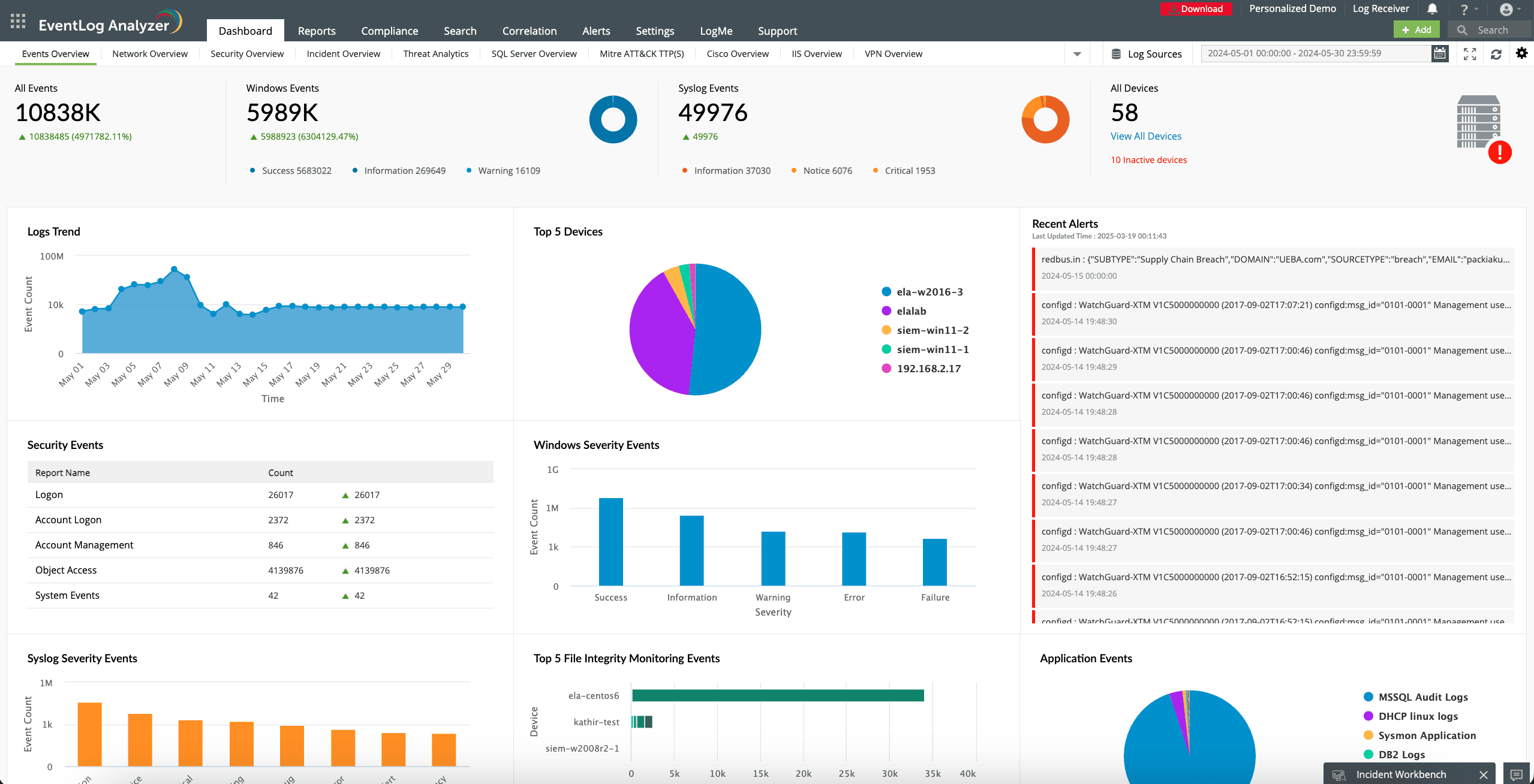The System Logging Protocol (syslog) is a protocol that was designed to standardize the message format used by network devices to communicate with the log server. It provides a mechanism for collecting, parsing, analyzing, and storing the logs generated in a centralized manner for real-time analysis. It is supported by many network devices, such as routers, switches, firewalls, Unix/Linux, and MacOS servers, making it easier to manage the logs generated by these devices.
As organizations grow, so do the number of devices within their network. And the volume of logs generated by these devices is enormous. Syslog monitoring and management is important for every organization to reduce system downtime, enhance the performance of the network, and strengthen the security policies of the enterprise.
Every syslog server contains three common components that help in the process of collection, storage, and analysis:
Standard syslog servers provide basic analyzing capabilities such as viewing and filtering of log data. Therefore, to identify a single problem, administrators often have to invest many hours sifting through stacks of syslog messages. When it comes to securing larger networks, it is important to have a third component on top of the listener, database, and filtering modules to make syslog management easier.
A log management tool can help you automate many tasks that can't be automated when using a standard syslog server. You can also trigger alerts and notifications and automate processes in response to select messages so that administrators can take immediate action when a problem occurs.
EventLog Analyzer is a syslog management tool that collects syslog events from various flavors of Unix operating systems such as RedHat, Debian, Open SUSE, OpenBSD, Ubuntu, Solaris, HP-UX, IBM AIX, and more. Once collected, the syslog messages are analyzed and insights on network activities are presented in concise reports displayed on dashboards.
EventLog Analyzer's syslog management capabilities include:

Generate reports for regulatory mandates such as PCI DSS, FISMA, the GDPR etc. with EventLog Analyzer's predefined and custom report templates.

With over 300 predefined alert criteria, EventLog Analyzer can quickly identify security incidents and send real-time SMS or email notifications to administrators.

EventLog Analyzer automatically archives and securely stores all log data collected from different sources. This archived log data is not only useful for immediate analysis but also for future reference, compliance audits, and forensic investigations.

EventLog Analyzer's exhaustive reporting package includes over 1,000 out-of-the-box reports. It also has a custom report builder that provides an option to build reports based on several criteria such as syslog event type, severity, source, and more.

EventLog Analyzer provides comprehensive incident response and management functions for syslog messages. The solution offers search and filtering capabilities to quickly investigate specific incidents, trace back events, and analyze root causes. You can also create automated workflows that go into immediate effect when an alert is triggered.

Generate reports for regulatory mandates such as PCI DSS, FISMA, the GDPR etc. with EventLog Analyzer's predefined and custom report templates.

With over 300 predefined alert criteria, EventLog Analyzer can quickly identify security incidents and send real-time SMS or email notifications to administrators.
Here are some of the benefits of using syslog:
Syslog messages follow a standardized structure defined by RFC 5424 when communicating within the network. The syslog format is as follows:
This is an example of what a syslog message would look like:
<165>1 2023-10-03T14:32:12Z myserver.example.com myapp - - [exampleSDID@32473 iut="3" eventSource="Application" eventID="1011" errorCode="E404" detail="File not found"]Syslog messages are categorized based on their severity. These levels help administrators quickly identify and address the most critical issues in their systems. There are eight priority levels, ranging from zero (most severe) to seven (least severe). Here are the standard syslog priority levels as defined in the syslog protocol:
| Syslog | Event log | |
|---|---|---|
| Nature | Syslog is a protocol that was initially developed for Unix-like operating systems but was later adopted by other operating systems and network devices over the years. | Event logs are specific to Windows operating systems |
| Format | Syslog messages follow a standardized format, which makes it easier to integrate and analyze logs from different sources. | Event logs contain information about the system, applications, and security in a structure that's unique to Windows. |
| Flexibility | Syslog is supported by many log management and SIEM solutions and can be easily configured to suit the requirements of the environment. | Event logs offer less flexibility in comparison to syslog messages, as event log configurations are bound by the Windows environment. |
| Detail | The detail in syslog messages is a little simpler. These details focus on giving essential information efficiently. | Event logs contain detailed information that provides visibility and in-depth insight into each event. |